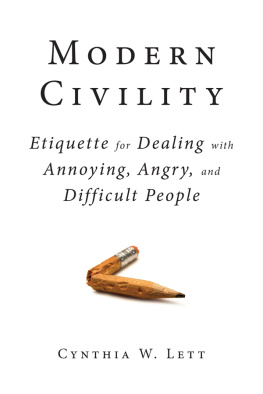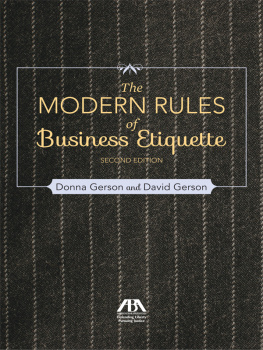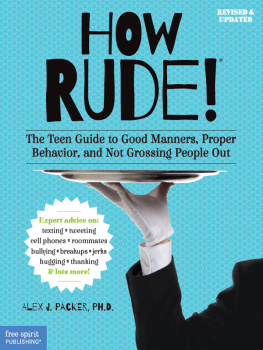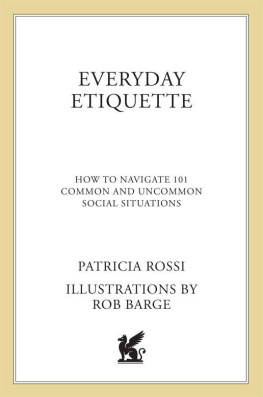

copyright 2009, 2013 by Cynthia W. Lett
All Rights Reserved. No part of this book may be reproduced in any manner without the express written consent of the publisher, except in the case of brief excerpts in critical reviews or articles. All inquiries should be addressed to Skyhorse Publishing, 307 West 36th Street, 11th Floor, New York, NY 10018.
Skyhorse Publishing books may be purchased in bulk at special discounts for sales promotion, corporate gifts, fund-raising, or educational purposes. Special editions can also be created to specifications. For details, contact the Special Sales Department, Skyhorse Publishing, 307 West 36th Street, 11th Floor, New York, NY 10018 or
Skyhorse and Skyhorse Publishing are registered trademarks of Skyhorse Publishing, Inc. , a Delaware corporation.
www.skyhorsepublishing.com
10 9 8 7 6 5 4 3 2 1
Library of Congress Cataloging-in-Publication Data is available on file.
ISBN: 978-1-62636-412-7
eISBN: 978-1-62873-876-6
Printed in China
Table of Contents
Interviews
Virtual Help Desks
From the Stores Point of View
Handshakes
Prologue
Annoyance: a source of vexation or irritation
-from Merriam-Websters Collegiate Dictionary, 10th Edition
T hats so annoying! I hate it when you do that! She has a terrible habit of doing these things when she is around me. He just wont stop!
Everyday, we interact with a slew of people: significant others, children, salespeople, and strangers. Lets face itthese people have the tendency to, at any given moment, get on our nerves. Other peoples behavior certainly can annoy us (and vice versa). This book is about bad habits, annoying behaviors, and how we can effectively deal with those around us who just dont seem to understand proper social etiquette.
I spent several years collecting observations, pet peeves, annoyances, and exasperations from clients, family, friends, and colleagues about ways in which people display annoying behavior. When I informed them that I was writing a book about other peoples annoying behavior, I was inundated with personal grievances and irritants from everyday life. As my research continued, I realized that many people had similar complaints about the ways people behave around them, whether it is in a restaurant, in written form, or even at home. I decided that it would be crucial to offer suggestions about dealing appropriately with such irksome situations. Along the way, I also received some very insightful responses about the state of etiquette in general, and Ive included these thoughts (some names have been withheld at the request of the submitter).
So now that we have established that people display annoying and obnoxious behavior on a daily basis (behavior that sometimes seems designed to ruin our day), we must also understand that how we react to these irksome individuals plays a key role in how we survive, and maintain sanity, in the world. Sometimes it feels as if the accused person is actually thinking, If I do this particularly obnoxious thing, I will ruin someones day but, in all honesty, this is probably not the case.
We spend every day assessing the importance of other peoples behavior to our happiness: Is this going to affect my day? Am I really going to let this bother me? When we spend so much time getting bothered by others, we take precious time away from achieving our daily tasks and enjoying the moment. For instance, we are home with our friends or family. It is relaxation time and we turn on the television, but we are unable to relax because so-and-so is typing loudly on the computer or whats-her-face is talking on the phone on the couch next to you. What those around us do while the television is on can be considered rude and annoying, but how we learn to react to those peoples obnoxious behavior will ultimately determine how much we will enjoy our TV viewing experience.
Look at it this way: When you see mishaps and missteps on televisionthe guy who falls, the woman who loses her temperthe laugh track begins and lightens up the moment. If we carried our own laugh track and chose to laugh at others bad behavior rather than allow it to grate on our nerves, our days would be happier and our relationships would be easier to maintain. It all depends on how we learn to react to annoyances around us. We can make that decision to let it roll off of us or to make a big deal about it. Wouldnt life be more fun if you just let it go? For those who sometimes just cant let it go, this book will offer solutions you should try in response to the perpetrator according to the rules of proper etiquette.
While you are reading the following chapters, I would like you to keep in mind not only the lessons youll learn about effectively dealing with annoying people and behaviors, but also how your own behavior may affect those around you. Are you patient, empathetic, kind, tolerant, and forgiving? Or... are you the first one to think or say, Thats so annoying!
Annoyance Rating System

Awfully annoying

Very annoying

Somewhat annoying

Could be annoying

Only annoying to a select few

CHAPTER 1
SIGNIFICANT OTHERS AND CHILDREN
I n our homeour sanctuarywe sometimes encounter the source of our greatest annoyance: our family and significant others. Almost everyone I talked with who is or was married or in a partner-ship had a spousal bad-behavioral issue to share. Some didnt stop with just their significant others and included their children, extended family, and neighbors in their examples. Some contributors shared so many that I was left wondering if anything could make them truly happy at home. Many of the grievances centered on the televisiona major point of contention. The rest covered the kitchen, the laundry, the housework, and the bedroom (for the sake of good taste, I am not including the bedroom examples in this bookIll leave those to the sex therapists). Learning what can be annoying in the home and then finding out how to react to these situations will hopefully help make domestic life more blissful.
Husbands and Boyfriends

My husband smokes! My husband leaves the toilet seat up! My husband has a messy desk! Many women find bothersome behavior emanating from their male companions. Whether the annoyance is about the kitchen, bathroom, laundry, bodily functions, bedroom, or communication (or lack of it), husbands and boyfriends were a major source of contention for the women I spoke to.
Next page


















